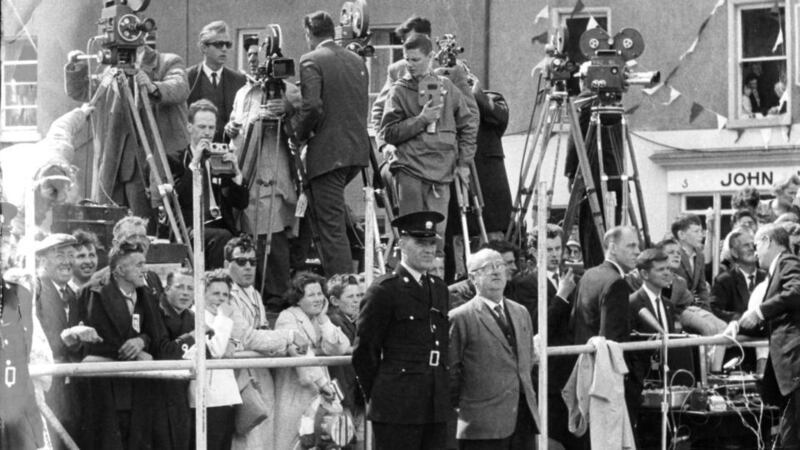I was very fortunate in that I joined RTÉ two weeks after it first went on air, and after about a year, I became a cameraman. The first assignment I was given was to be transferred to the newsroom to be involved in the coverage of John Fitzgerald Kennedy’s visit.
I was assigned to film JFK coming in from the airport at about 8.15pm. So, once I did that, I dropped my 100 feet of film to a motorcycle courier who got it to the newsroom in time for the nine o’clock news. In the days before the port tunnel, that was good going.
My colleagues and I then got into our car and drove to New Ross. We arrived early in the morning and as one of our reporters was getting out of bed at a local B&B, I got into the bed for a few hours.

I got up later when JFK was arriving at the GAA grounds and I was in a camera position in the middle of the grounds, about 50 metres away from him and shooting with a 75mm lens. I got some lovely material of the kids.
My next problem was that I had to get from that position and on to a truck that was going to be in front of the limo as he travelled to New Ross. I couldn’t get onto the truck as there were about 50 cameramen from all over the world on it and my hands were full.
I kept running behind the truck and eventually two of the men stopped filming and reached down and pulled me up and dumped me onto the truck. After filming his marvellous speech there, I headed for Limerick.
The most exclusive time I had with JFK was when I was sent to Áras an Uachtaráin by the head of news to shoot a private dinner between JFK, Éamon de Valera, Seán Lemass and their wives, as well as the president’s sister, Eunice Shriver. I had no lighting with me and I was in this small anteroom, which was very dull. I was thinking: “How am I going to get a picture here?”, so I changed my camera from 24 frames a second to 12 and that meant the film would get three to four times more light.
They stood dead still for the picture so it worked and the images were syndicated all over the world.
My overall impression of JFK was that there was a warmth and a definite sincerity there. He really felt like he was with his people and it looked like it meant something sacred to him. We identified with him. He identified with us. That was the electricity.
The visit to his ancestral home at Dunganstown was the most incredible part I filmed. We had no way of doing a live link in those days, as we didn’t have satellites that we could send a picture to. Two weeks before he arrived we filmed the route from New Ross to the homestead and we cut to that footage in between shots, and it worked perfectly.
Over the years I kept in contact with his sister, Jean Kennedy Smith. Sometimes, I do look back on the footage and think how marvellous it was to have been within a few yards of this man.
I remember best the way he interacted with ordinary people. He wanted to shake your hand and to let you know that he cared about you and that the link between Ireland and America was important to him and his family.
(In conversation with Brian O'Connell)










